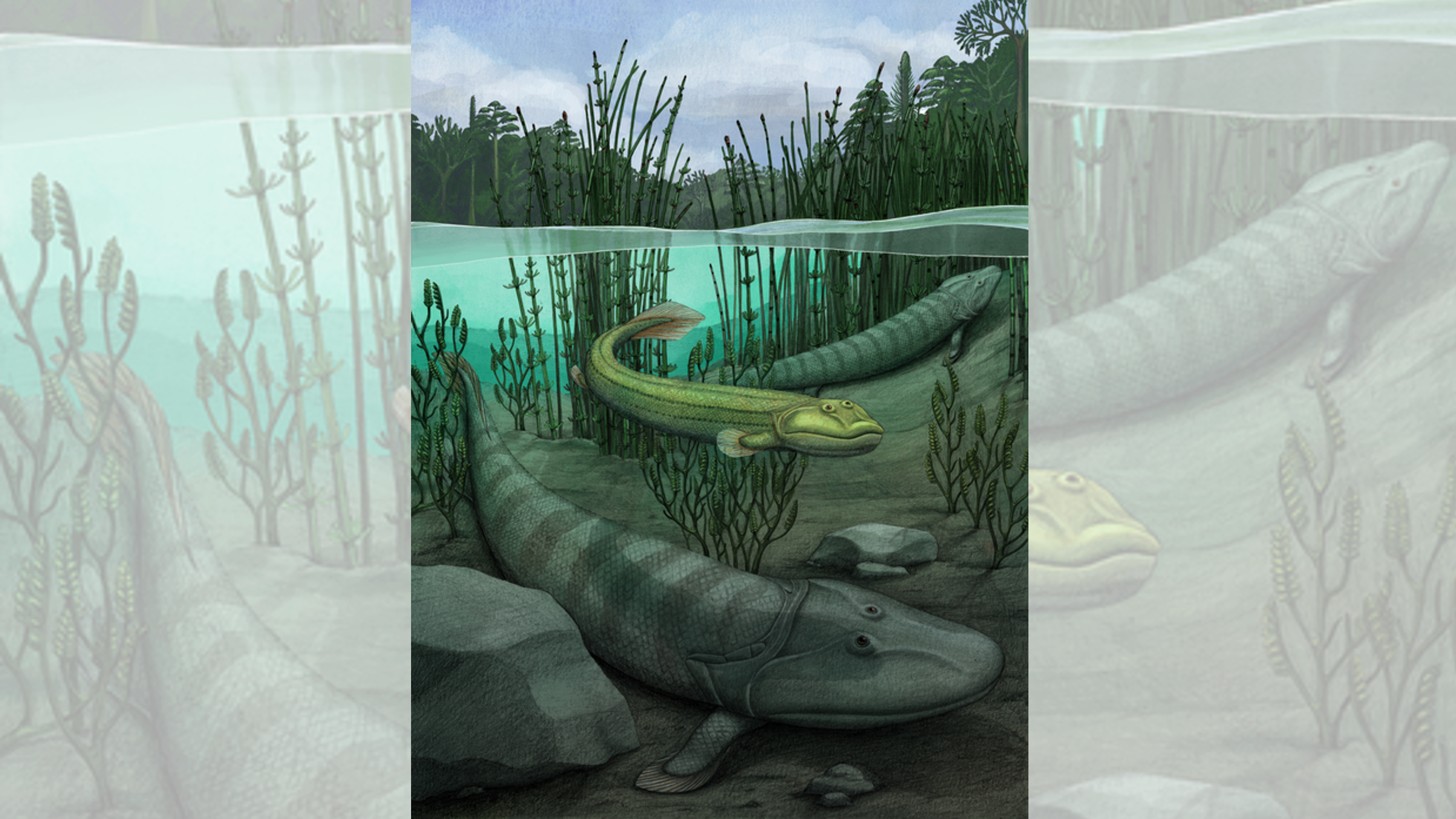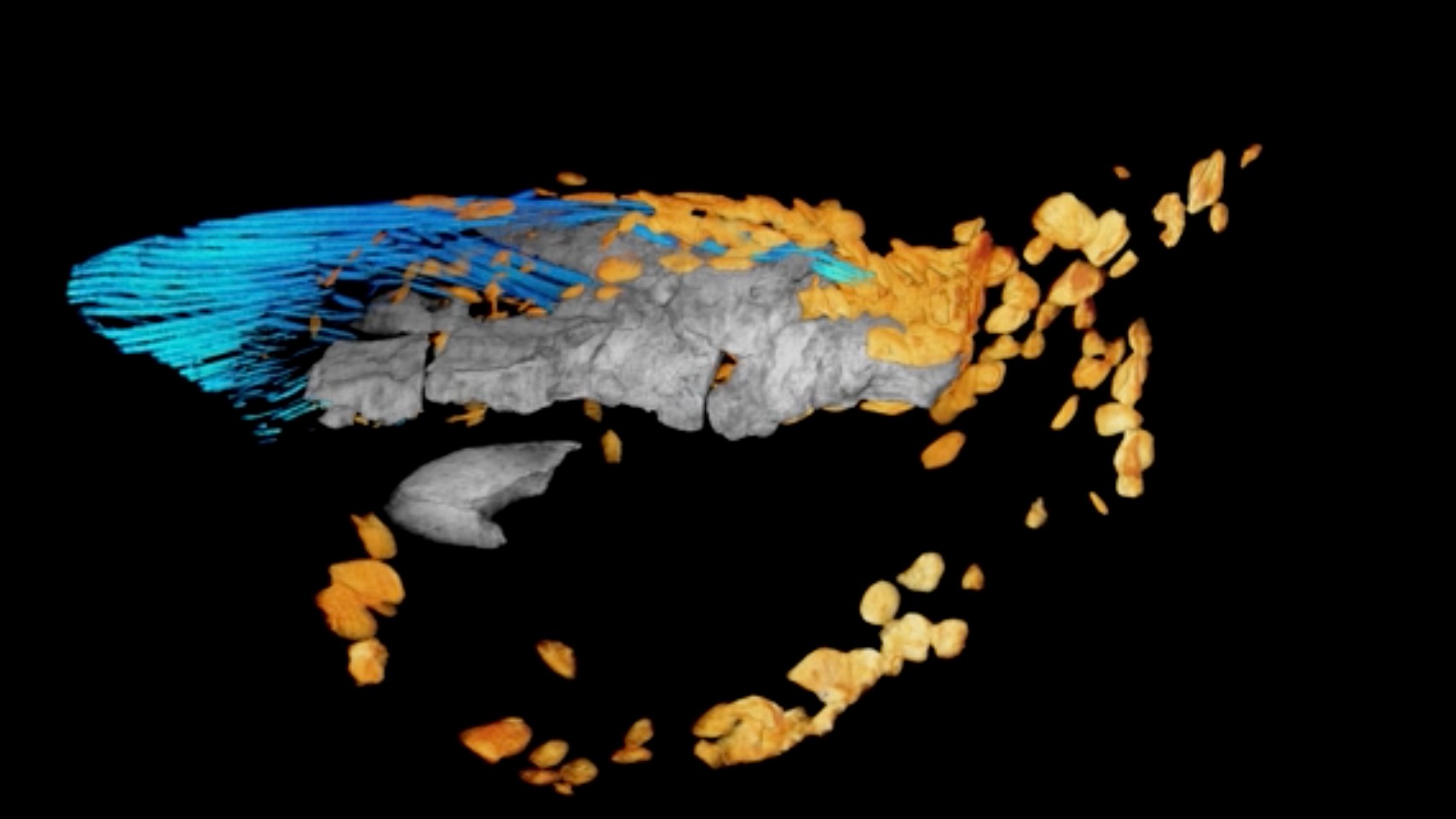Ancient homesick 'fishapod' abandoned the land and returned to the sea, fossils show
This relative of Tiktaalik knew that land was overrated.

Long before the dinosaurs appeared, when the first forests stretched toward the sky and enormous insects ruled Earth, a humble, shovel-faced fish with particularly strong fins decided to try its luck on dry land. Around the same time, another early land-exploring fish decided terrestrial life was overrated and fled back into the ocean, scientists recently discovered.
The fish that chose to stay on land was Tiktaalik roseae — more commonly known as simply Tiktaalik, after an Inuktitut word meaning "large freshwater fish" — and it is considered to be one of the oldest common ancestors of all land-dwelling vertebrates, from dinosaurs to mammals.
With foot-like fins that helped it haul itself out of water and onto shallow riverbanks, Tiktaalik is sometimes called a "fishapod," or footed fish. AndTiktaalik wasn't alone on this evolutionary journey.

Other fishapods of the time were also evolving the ability to haul themselves onto land — only to turn right around and head back into the water.
In a study published July 20 in the journal Nature, researchers described the fossils of an ancient fishapod called Qikiqtania wakei, named for the Inuktitut word describing the region of the Canadian Arctic where both Tiktaalik and Qikiqtania were uncovered. Both species lived during the Late Devonian period, around 375 million years ago. An analysis of Qikiqtania's upper and lower jaw bones suggests that it had a flattened, triangular head with eyes at the top, like Tiktaalik. But Qikiqtania was much smaller; while Tiktaalik could grow to a whopping 9 feet (2.7 meters) long, Qikiqtania appears to have maxed out around 30 inches (76 centimeters).
Related: 'Astonishing' 500 million-year-old fossils preserved the brain of this creepy 3-eyed predator
However, it was Qikiqtania’s fins that really set it apart. While the newfound fishapod's fins look superficially similar to those of Tiktaalik, computed X-ray tomography, or CT scans, revealed a peculiar arrangement of bones that is missing the structural elements required for walking, lifting and holding the fishapod's body up, according to the study authors.
Sign up for the Live Science daily newsletter now
Get the world’s most fascinating discoveries delivered straight to your inbox.
Rather, Qikiqtania's smooth and curving fin bones would have been much better suited for paddling, the researchers wrote.
"At first we thought it could be a juvenile Tiktaalik, because it was smaller and maybe some of those processes hadn't developed yet," study co-author Neil Shubin, a professor at the University of Chicago who also helped discover Tiktaalik in 2004, said in a statement. "But the humerus is smooth and boomerang shaped, and it doesn't have the elements that would support it pushing up on land. It's remarkably different and suggests something new."
In other words, Qikiqtania seems to be a species in the midst of an evolutionary about-face. After evolving a body similar to that of Tiktaalik and the amphibious tetrapods (four-legged animals) that would follow it, Qikiqtania returned to the water and began evolving back into a full-fledged fish.
According to the study authors, this fossil's discovery fleshes out the messy story of vertebrate evolution in ways that Tiktaalik alone could not.
"Tiktaalik is often treated as a transitional animal because it's easy to see the stepwise pattern of changes from life in the water to life on land," lead study author Thomas Stewart, formerly a researcher at the University of Chicago who will be joining the faculty at Pennsylvania State University this summer, said in the statement. "But we know that in evolution things aren't always so simple... It's more than a simple transformation with just a limited number of species."
Originally published on Live Science.

Brandon is the space/physics editor at Live Science. His writing has appeared in The Washington Post, Reader's Digest, CBS.com, the Richard Dawkins Foundation website and other outlets. He holds a bachelor's degree in creative writing from the University of Arizona, with minors in journalism and media arts. He enjoys writing most about space, geoscience and the mysteries of the universe.









